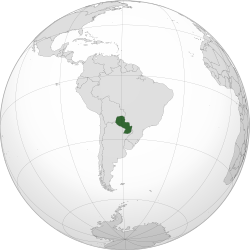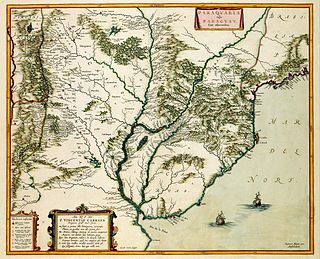
The history of Paraguay encompasses thousands of years of human habitation. Both agricultural and nomadic Guaycuruan lived in the region at the time of the Spanish Conquest. It became a relatively neglected part of the Spanish Empire due to its isolation and lack of mineral wealth, nonetheless a small group of Spanish settlers came to reside in the area, increasingly intermarrying with native women to produce a mestizo population. In the 17th and 18th centuries, Jesuit missionaries organized the natives into planned communities known as reducciones, and the experiment gained notable attention in Enlightenment Era Europe.
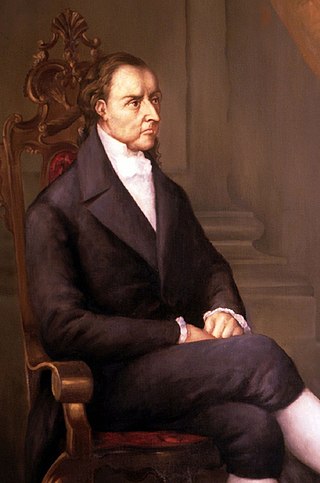
José Gaspar Rodríguez de Francia y Velasco was a Paraguayan lawyer and politician, and the first dictator (1814–1840) of Paraguay following its 1811 independence from the Spanish Viceroyalty of the Río de la Plata. His official title was "Supreme and Perpetual Dictator of Paraguay", but he was popularly known as El Supremo.

The Argentine War of Independence was a secessionist civil war fought from 1810 to 1818 by Argentine patriotic forces under Manuel Belgrano, Juan José Castelli, and José de San Martín against royalist forces loyal to the Spanish crown. On 9 July 1816, an assembly met in San Miguel de Tucumán, declaring independence with provisions for a national constitution.

The Viceroyalty of the Río de la Plata meaning "River of the Silver", also called "Viceroyalty of the River Plate" in some scholarly writings, in southern South America, was the last to be organized and also the shortest-lived of the Viceroyalties of the Spanish Empire in the Americas. The name "Provincias del Río de la Plata" was formally adopted in 1810 during the Cortes of Cádiz to designate the Viceroyalty of the Río de la Plata.
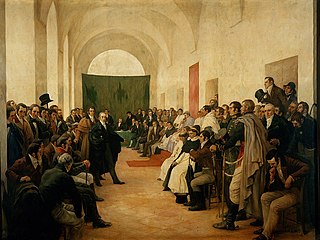
The May Revolution was a week-long series of events that took place from May 18 to 25, 1810, in Buenos Aires, capital of the Viceroyalty of the Río de la Plata. This Spanish colony included roughly the territories of present-day Argentina, Bolivia, Paraguay, Uruguay, and parts of Brazil. The result was the removal of Viceroy Baltasar Hidalgo de Cisneros and the establishment of a local government, the Primera Junta, on May 25.
Junta Grande, or Junta Provisional Gubernativa de Buenos Aires, is the most common name for the executive government of the United Provinces of the Río de la Plata, that followed the incorporation of provincial representatives into the Primera Junta.
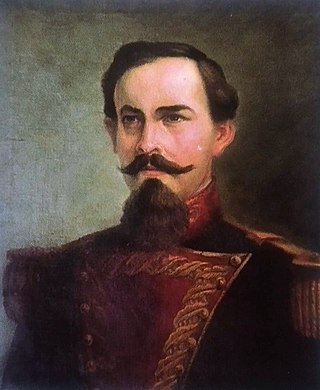
Fulgencio Yegros y Franco de Torres was Paraguayan soldier and first head of state of independent Paraguay. The town of Yegros is named in his honor.

Cornelio Judas Tadeo de Saavedra y Rodríguez was an Argentine military officer and statesman. He was instrumental in the May Revolution, the first step of Argentina's independence from Spain, and became the first head of state of the autonomous country that would become Argentina when he was appointed president of the Primera Junta.

Pedro Juan Caballero was a leading figure of Paraguayan independence. He was born in Tobatí, a town located Cordillera Department of Paraguay which was then part of the Spanish Viceroyalty of the Río de la Plata. He was one of the major leaders of the Revolution of May 14, 1811, despite being six years younger than the leading figure of Independence period Fulgencio Yegros and 20 years younger than the future dictator of Paraguay José Gaspar Rodríguez de Francia. In 1820 he was accused of being involved in the conspiracy against Francia, and committed suicide in his cell on July 13, 1821. The Paraguayan city of Pedro Juan Caballero is named after him.

Miguel de Azcuénaga was an Argentine brigadier. Educated in Spain, at the University of Seville, Azcuénaga began his military career in the Viceroyalty of the Río de la Plata and became a member of the Primera Junta, the first autonomous government of modern Argentina. He was shortly exiled because of his support to the minister Mariano Moreno, and returned to Buenos Aires when the First Triumvirate replaced the Junta. He held several offices since then, most notably being the first Governor intendant of Buenos Aires after the May Revolution. He died at his country house in 1833.
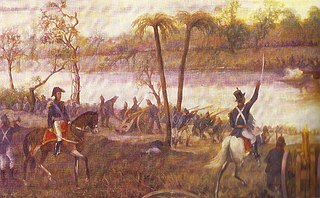
The Paraguay campaign (1810–11) of the Argentine War of Independence was the attempt by a Buenos Aires-sponsored militia, commanded by Manuel Belgrano, to win the royalist Intendency of Paraguay for the cause of May Revolution. In Paraguay it is considered as their War of Independence.

The Casa de la Independencia Museum is a history museum and historic house located in Asunción, Paraguay.
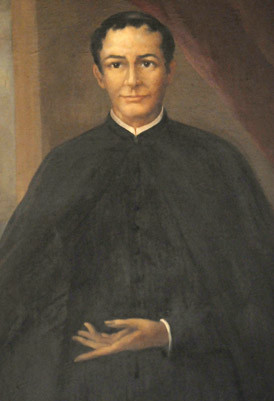
Francisco Javier Bogarín was a Catholic priest and teacher who actively participated in the process of independence of Paraguay. Born in Carapeguá, Paraguarí Department, 66 kilometers from Asunción, in 1763. For a couple of months in 1811 he was a member of the five-man governing junta of Paraguay.
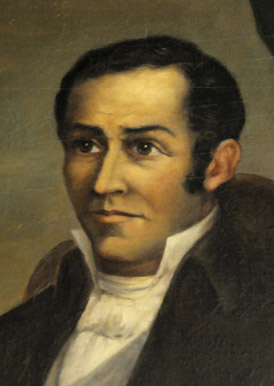
Fernando de la Mora was one of the founding fathers of Paraguay, and was an early leader of the country between 1811 and 1813, but soon lost his power and died imprisoned. The Paraguayan city Fernando de la Mora is named in his honor.
The Battle of Tacuarí was a battle in Southern Paraguay between revolutionary forces under the command of General Manuel Belgrano, member of the Primera Junta government of Argentina, and Paraguayan troops under colonel Manuel Atanasio Cabañas, at the time at the service of the royalists.
Long before Spanish conquistadors discovered Paraguay for King Charles V in 1524, semi-nomadic Chaco Indian tribes populated Paraguay's rugged landscape. Although few relics or physical landmarks remain from these tribes, the fact that nearly 90 percent of Paraguayans still understand the indigenous Guarani language is testament to Paraguay's Indian lineage. The Spanish conquistadors arrived in 1524 and founded Asunción in 1537. Paraguay's colonial experience differed from that of neighboring countries, such as Bolivia and Argentina, because it did not have gold and other mineral deposits that the Spanish were searching for. Because of its lack of mineral wealth and its remoteness, Paraguay remained underpopulated and economically underdeveloped. Early governor Domingo Martínez de Irala took an Indian wife and a series of Indian concubines and encouraged other male settlers to do likewise. Intermarriage fused Indian culture with that of the Europeans, creating the mestizo class that dominates Paraguay today. From the beginning, however, Indians retained their Guaraní language, even as Spanish influence was accepted, and embraced, in other aspects of society.

Paraguay–Spain relations are the current and historical relations between Paraguay and Spain. Both nations are members of the Association of Spanish Language Academies and the Organization of Ibero-American States.
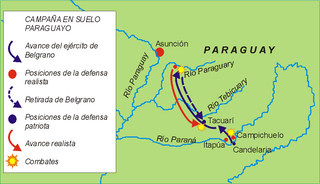
The battle of Paraguarí took place on January 19, 1811, in Paraguarí, Paraguay, between the patriot army led by Manuel Belgrano and the Royalist army located in Paraguay led by Bernardo de Velasco. The battle would end with a Paraguayan victory; but it boosted confidence in the local population to declare themselves independent from both Buenos Aires patriots and royalists months later.
Below is the timeline of Paraguayan history.
The rise of the Argentine Republic was a process that took place in the first half of the 19th century in Argentina. The Republic has its origins on the territory of the Viceroyalty of the Río de la Plata, a colony of the Spanish Empire. The King of Spain appointed a viceroy to oversee the governance of the colony. The 1810 May Revolution staged a coup d'état and deposed the viceroy and, along with the Argentine war of independence, started a process of rupture with the Spanish monarchy with the creation of an independent republican state. All proposals to organize a local monarchy failed, and no local monarch was ever crowned.
